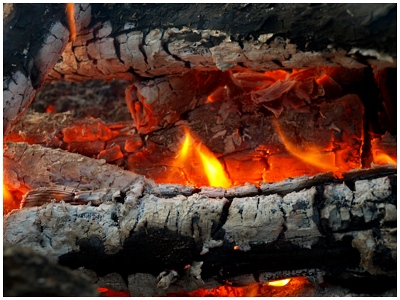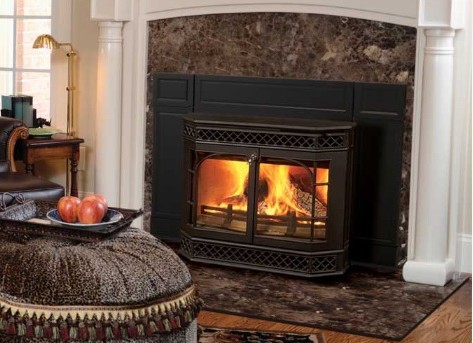Tips for Burning Wood Responsibly
 The best measure of responsible wood-burning is simply the amount of smoke that’s produced by the fire and released into the air. Old-fashioned masonry fireplaces have long been known to fail the responsible wood-burning test. Because such fires are so inefficient, they also produce very little heat that can help offset utility costs in winter. New technology, on the other hand, is extremely efficient and can produce so little smoke that some appliances are considered by the Environmental Protection Agency (EPA) to be smokeless. Modern-day fireplace inserts, wood-burning stoves, and pellet stoves can also produce enough heat to cut heating costs. The great news is that responsible wood-burning equals improved heating efficiency.
The best measure of responsible wood-burning is simply the amount of smoke that’s produced by the fire and released into the air. Old-fashioned masonry fireplaces have long been known to fail the responsible wood-burning test. Because such fires are so inefficient, they also produce very little heat that can help offset utility costs in winter. New technology, on the other hand, is extremely efficient and can produce so little smoke that some appliances are considered by the Environmental Protection Agency (EPA) to be smokeless. Modern-day fireplace inserts, wood-burning stoves, and pellet stoves can also produce enough heat to cut heating costs. The great news is that responsible wood-burning equals improved heating efficiency.
Smoke is, in essence, unburned fuel. The right environment is needed for wood to burn completely and to get the most effective burn out of your fuel bucks. Modern EPA-qualified wood-burning products create the ideal burning environment, which includes the right mix of proper fuel, oxygen, and heat.
Catalytic and Non-Catalytic Wood Stoves and Fireplace Inserts
Technology is available today that burns the wood while burning away the smoke. The result is less pollution caused by smoke and more heat caused by burning the smoke. Two examples of this technology are fireplace inserts and wood stoves that are catalytic and non-catalytic. A catalytic stove or insert has chambers that are honeycombed and coated with a metal catalyst that increases the combustion rate. The gases and particulate matter normally emitted into the atmosphere are burned away by the catalytic combustor. In the case of non-catalytic wood stoves, which are usually less expensive and require less maintenance, the combustion occurs inside the firebox.
Seasoned Wood
Whichever type of appliance you use, an important element of an efficient fire is the wood that you use to fuel the fire. The wood should be seasoned, which means that it has a moisture content of 20% or less. When wood has moisture in it, more smoke is produced and the bulk of the fire’s energy goes toward burning out the moisture rather than toward emitting heat.
Wood is more and more in demand as a fuel because of the high and rising cost of utilities. Wood is a renewable, sustainable biomass fuel that is available in abundance and is relatively inexpensive. If you can harvest firewood from your own property, the cost is even lower. When you couple seasoned firewood with an EPA-qualified appliance, you are able to burn wood responsibly.
Comparing Old and New Wood-Burning Technology
 Fireplaces are still the favorite amenity among home buyers, but using a traditional masonry fireplace is not a way to burn wood responsibly. The amount of particulate matter released in masonry fireplaces and in wood-burning appliances built back in the 1970s and 1980s is 42 grams per hour or more. Today’s EPA-qualified products emit no more than 7.5 grams per hour or less. Obviously, that is a huge difference in the amount of pollution caused by a wood-fueled fire, when comparing old and new technologies.
Fireplaces are still the favorite amenity among home buyers, but using a traditional masonry fireplace is not a way to burn wood responsibly. The amount of particulate matter released in masonry fireplaces and in wood-burning appliances built back in the 1970s and 1980s is 42 grams per hour or more. Today’s EPA-qualified products emit no more than 7.5 grams per hour or less. Obviously, that is a huge difference in the amount of pollution caused by a wood-fueled fire, when comparing old and new technologies.
New appliances release more heat to a significant degree, just as they reduce pollution in a meaningful way.
Contact our chimney professionals if you are interested in replacing outdated appliances with new technology and if you want to create an environment of more responsible wood-burning.
Northeastern Chimney, Inc
37 Cody Street, West Hartford, CT 06110
Phone: 860-233-5770


